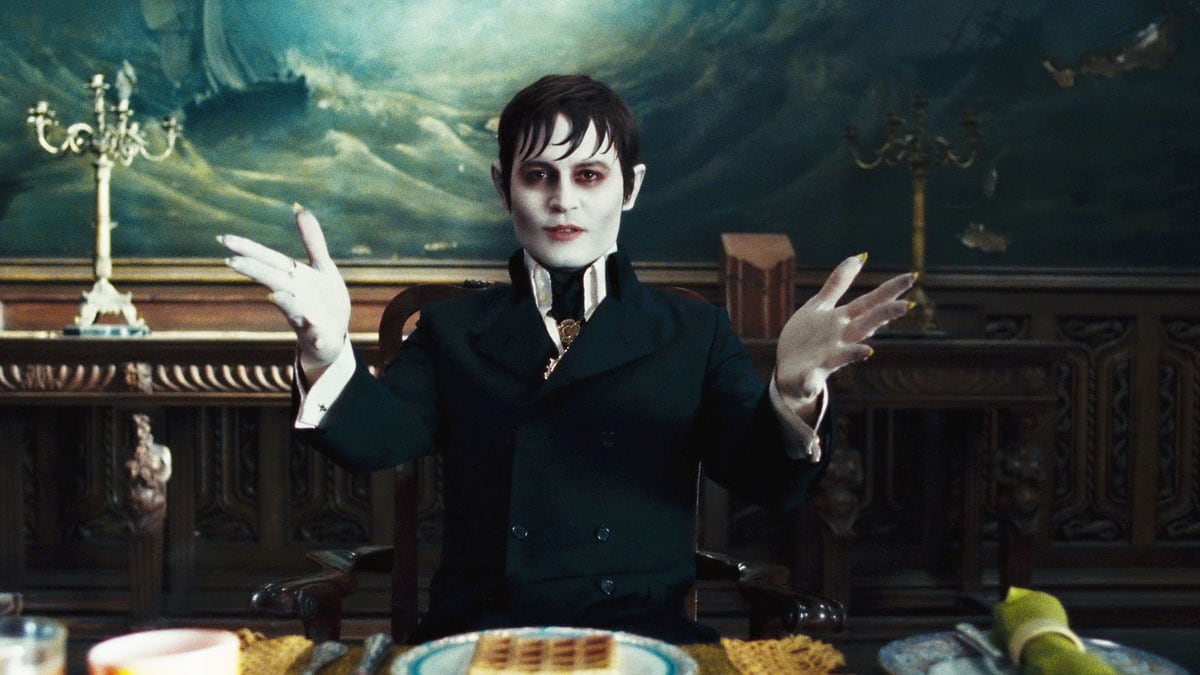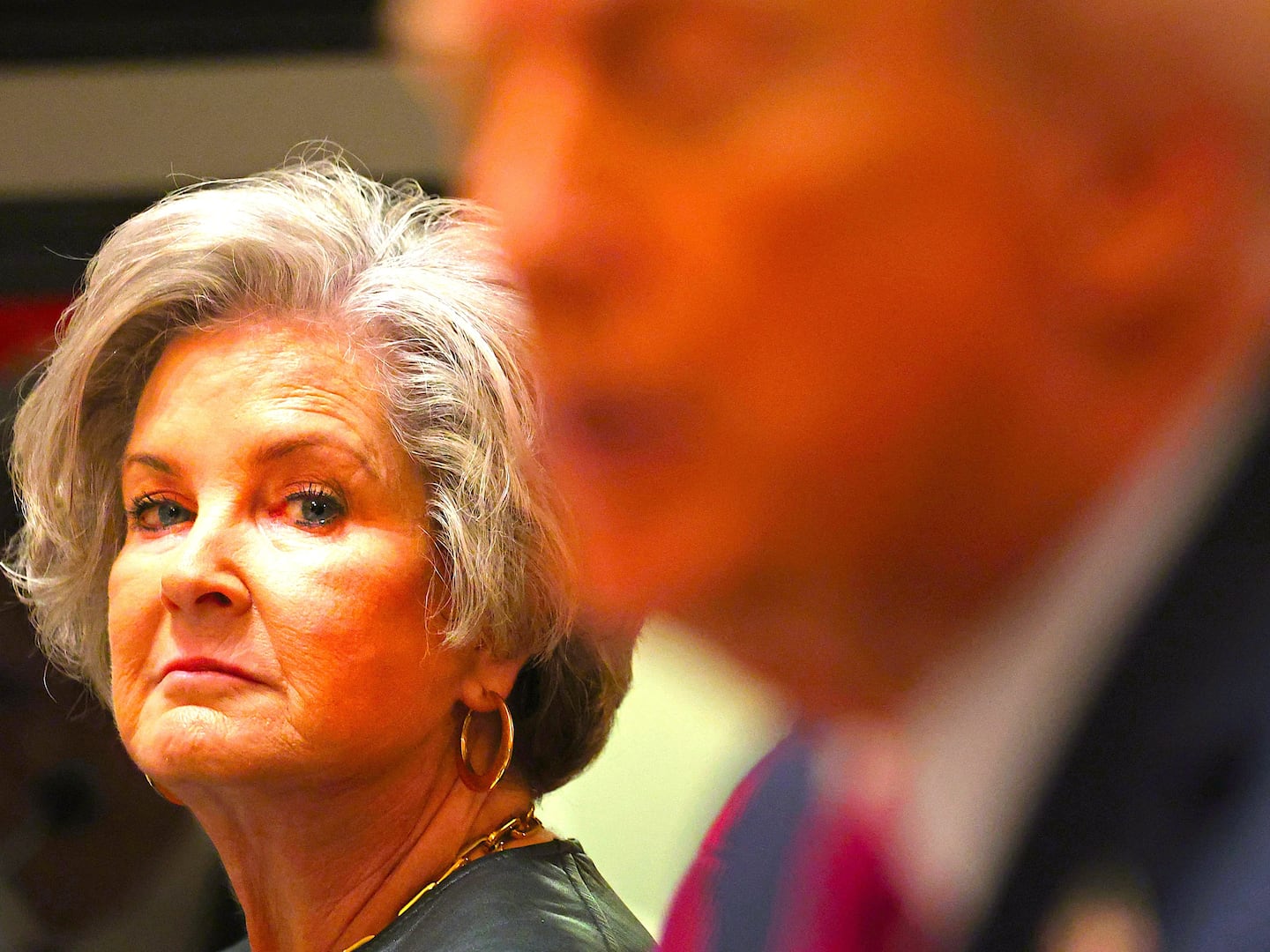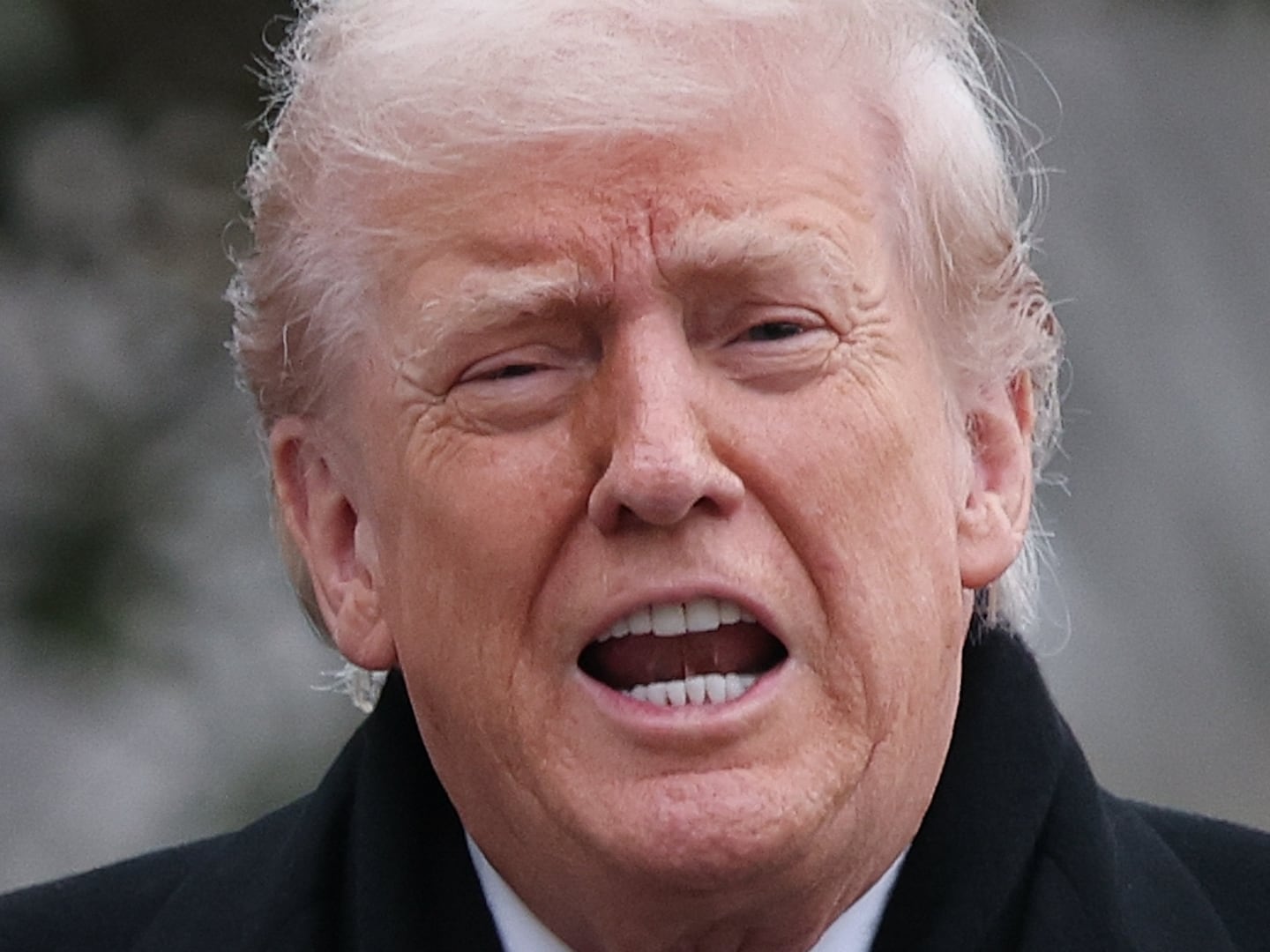In the more than 45 years since Dark Shadows first premiered as an afternoon soap opera on ABC in June 1966, the series created by Dan Curtis has spawned numerous feature films, novels, television series, comic books, and even hit singles. Evolving from a standard soap opera into a supernatural horror-fest—overflowing with vampires, witches, ghosts, and H.P. Lovecraftian ancient beings (remember the Leviathans?)—Dark Shadows was a forerunner for many of today’s spine-tingling TV shows and films.
Revolving largely around tortured vampire Barnabas Collins (and, initially, around governess ingénue Victoria Winters), Dark Shadows offered thrills, chills, and unintentional laughs, thanks to rapid-fire production times and frequent flubs (such as actors forgetting lines, the sets swaying, crew members wandering onto the set, or the boom mic being visible), but it has also found a legion of fans new and old for its imaginative world and what might be the first depiction of a remorseful vampire.
With the May 11 release of Tim Burton’s feature film version, which stars Johnny Depp as bloodsucker Barnabas Collins, it’s time to either brush up on your knowledge of Dark Shadows or dive into the world’s complex and often confusing mythology for the first time. What is the difference between Collinwood and Collinsport? What is Parallel Time? What was House of Dark Shadows?
We delve into the original 1966-71 ABC soap, the 1991 NBC revival series, and beyond to offer you a glossary of Dark Shadows’ most common terms, characters, and concepts.
Angelique Bouchard: A vengeful witch in the 18th century who is responsible for the curse that transforms Barnabas Collins into a vampire after he spurns her for his true love Josette DuPres. She is played by Eva Green in the 2012 film; previously, the role has been filled by Lara Parker and Lysette Anthony, as well as Ivana Millicevic in the unaired 2004 pilot. (See also: WB Pilot, The.)
Barnabas Collins: The Collins family scion in the late 1700s, he’s transformed into a bloodthirsty vampire by Angelique and imprisoned for centuries before being accidentally released in the 20th century. Played by Johnny Depp in Tim Burton’s current feature film adaptation (but set in 1972), the role of Barnabas was previously occupied by the late Jonathan Frid, Ben Cross, and Alex Newman.

Blue Whale, The: A popular waterside tavern in Collinsport that is frequented by the locals and often provided a backdrop to some of the town-based action on Dark Shadows. It is said to be inspired on The Black Pearl, a Newport, Rhode Island restaurant.
Cannery, The: Owned by the Collins Family, this seafood canning factory is one of the sources of their income and the family employs many of the townspeople (see also: Collinsport) of the Maine fishing village where the show is set. Brother and sister Roger Collins and Elizabeth Collins-Stoddard oversee the business.
Carolyn Stoddard: The troubled teenage daughter of Elizabeth Collins Stoddard with a penchant for mischief and causing her mother heartache. Chloë Grace Moretz plays Caroline in the 2012 film; she is previously portrayed by Nancy Barrett, Barbara Blackburn (in the 1991 Revival Series), and Jessica Chastain in the unaired 2004 pilot. (See also: WB Pilot, The.)
Coffin: A final resting place for corpses, and for daytime slumber for vampires. (See also: Vampire.)
Collinsport: A fictitious Maine fishing village, roughly 50 miles from Bangor, where Dark Shadows is set. The town is home to the wealthy Collins family (see also: Collinwood), a cannery (see also: Cannery, The) that employs many townspeople, and to a host of various supernatural entities and creatures, for as-yet-unexplained reasons.
Collinwood: The palatial ancestral home of the wealthy Collins Family. Built in 1795 by Joshua Collins as a house on the hill, it has served as the home for several generations of Collinses since they moved from their original home on the estate in the late 18th century. (See also: Old House, The.) Portions of the house have fallen into disrepair, and entire wings have been sealed off by various owners at one time or another. It is reputed to be haunted, and many Collinsport locals look upon the house and its denizens with a mix of suspicion and fear.
Crypt: The Collins Family maintained a huge family mausoleum in the local cemetery (see also: Eagle Hill Cemetery), in which the remains of many of their ancestors were placed. In most versions of Dark Shadows, the mausoleum contains a secret room, used during the American Revolution, which served as a place of imprisonment for vampire Barnabas Collins for several centuries. In the 2012 Tim Burton film, however, Barnabas is chained in his coffin and buried; excavation ends up leading to his release.
Dan Curtis: The creator of Dark Shadows and its executive producer. Curtis would go on to direct and produce such sweeping miniseries as The Winds of War and its sequel, War and Remembrance, and films such as The Night Stalker (which would inspire the cult television show, Kolchak: The Night Stalker), as well as the early-'90s revival of Dark Shadows. (See also: Revival Series, The.) He died in 2006.
Dark Shadows: An interconnected series of various television shows and feature films (see also: House of Dark Shadows and Night of Dark Shadows), as well as spinoff novels, comic books, and audio plays. The term typically refers to the original afternoon television soap opera, which ran on ABC from 1966 to 1971 (for 1,225 episodes) and was created by Dan Curtis. Originally, the show had no supernatural elements, until several storylines introduced various ghosts and a vengeful phoenix. The arrival of Jonathan Frid’s character, vampire Barnabas Collins, in 1967 quickly pushed the show into deeper supernatural territory, and it eventually included witches, werewolves, a Frankenstein’s monster, possession by malevolent ghosts, the Devil, time travel, and parallel universes, and an ancient race of beings called the Leviathans.
David Collins: The troubled ne’er-do-well son of Roger Collins who is far more attuned with the supernatural than his family gives him credit for and whose snooping behavior often gets him into trouble. Gulliver McGrath plays him in Burton’s film; previous actors inhabiting the role include Joseph Gordon-Levitt, Weeds’ Alexander Gould, and David Henesy.
Eagle Hill Cemetery: A cemetery in Collinsport, Maine (see also: Collinsport), which contains the Collins Family Mausoleum. (See also: Crypt.) In the original series, the cemetery was not only the site of Barnabas Collins’s imprisonment, but multiple characters (especially waitress-and-eventual governess Maggie Evans) were kidnapped and held here.
Elizabeth Collins Stoddard: The matriarch of the wealthy Collins clan, played by Michelle Pfeiffer in Tim Burton’s 2012 film. In the original series, she’s played by Joan Bennett as a wealthy eccentric and recluse who cannot leave the family home (see also: Collinwood) because she fears she will be discovered as her late husband’s killer. In the 1991 series (see also: Revival Series, The), she is portrayed by Jean Simmons, and the plot does away with the murder/recluse elements of her character. Blair Brown—currently starring on Fox’s Fringe—played her in the unaired 2004 pilot. (See also: WB Pilot, The.)
Governess: A young woman who was typically employed by wealthy families to care for and privately educate their children. In the case of Dark Shadows, this role is most often performed by orphan Victoria Winters, who arrives at Collinwood in the first episode after receiving a letter from Elizabeth Collins Stoddard. In the original series, the departure of actress Alexandra Moltke (and subsequent termination of her storyline under two other actresses) lead to local waitress Maggie Evans being hired as the new governess at Collinwood.
House of Dark Shadows: A 1970 feature film directed by Dan Curtis and based on the original soap opera’s Barnabas Collins/vampire storyline, though with several changes to both the arc’s conclusion and the characters. This version of Barnabas (also played by the late Jonathan Frid) is far darker and more malevolent than his daytime soap counterpart. The character of Victoria Winters (see also: Governess) is not present, though the role of both governess and reincarnation of Barnabas’s fiancée Josette DuPres was fulfilled by Maggie Evans (Kathryn Leigh Scott). Far more violent than the television show, the film’s tone would go on to greatly influence the 1991 revival series. (See also: Revival Series, The.)
“Josette’s Theme”: A piece of instrumental music composed by Robert Cobert (see also: “Shadows of the Night”) that is associated with the character of Josette DuPres, the doomed fiancée of Barnabas Collins, because it was contained within a music box (see also: Music Box) that Barnabas gave to her as a present.
Josette DuPres: The 18th-century true love of Barnabas Collins who meets a most unfortunate end. He believes that she will come back to him and has been reincarnated. Bella Heathcote plays Josette in Tim Burton’s 2012 film.
Joshua Collins: The father of Barnabas Collins. In the late 1700s, he orders the construction of the family’s grand new mansion, Collinwood, on the expansive estate, moving them out of their smaller residence, which became known as the Old House. In Tim Burton’s film, the role is played by Ivan Kaye; in the original series, Louis Edmonds did double-duty as Joshua Collins and Roger Collins.
Julia Hoffman: A psychiatric doctor and also—most randomly—an expert on rare diseases of the blood who eventually becomes a staunch ally to Barnabas Collins, though their relationship is antagonistic at first. Julia is played by Helena Bonham Carter in Tim Burton’s film. In some Dark Shadows continuities, she is the head doctor at Windcliff Sanitarium and brought in to consult on the mysterious attacks going on in Collinsport in which the victims are drained of their blood. In others, she is a former doctor-turned-historian (a reference to the cover story Julia makes in the original series) who happens to be at Collinwood when Barnabas is released; in others still, she’s the personal doctor of Elizabeth Collins Stoddard. The role has previously been occupied by Grayson Hall, Barbara Steele, and Kelly Hu.
Naomi Collins: The mother of Barnabas Collins and wife of Joshua Collins. She is played in the 2012 film by Susanna Cappellaro.
Mrs. Johnson: The family’s crotchety housekeeper. Ray Shirley plays her in the 2012 film; the role was previously played by Clarice Blackburn and Julianna McCarthy (and Barbara Cason in House of Dark Shadows).
Music Box: An ornate music box that figures prominently into the Dark Shadows mythos. A gift from Barnabas Collins to his bride Josette (see also: Josette’s Theme), it appears in multiple versions of the Barnabas/Victoria/Josette love story, typically passed between Barnabas and the woman he believes to be the reincarnation of his dead bride.
Night of Dark Shadows: A 1971 horror film directed by Dan Curtis that is based around some elements of Dark Shadows and variations on several characters, including Angelique (Lara Parker) and Quentin (David Selby), and involves a story of witchcraft, reincarnation, and vengeful ghosts. Not as successful as House of Dark Shadows, it was released after the cancelation of the series and has only a tenuous relationship to the plot of the original.
Old House, The: The original home of the Collins clan, it’s left behind in roughly 1795 when patriarch Joshua Collins builds the family a larger home (see also: Collinwood) on the estate. The Old House falls into a state of decay and disrepair. In Dark Shadows, Barnabas’ return as a vampire in the present day leads to him assuming ownership of the house, which he restores to its period details (and without electricity or modern conveniences), as a gift from his “cousin,” Elizabeth Collins Stoddard, who believes him to be a distant relative from England.
Parallel Time: The name for an alternate time stream within the Dark Shadows mythology. Utilizing the concept of alternate realities, the show explored the notion of causality and divergent time streams stemming from singular actions by characters that resulted in changed outcomes. At first, this other time stream was visible—for unknown reasons—from the mainstream timeline by a room in the East Wing of Collinwood, but characters traveled between the two timestreams. Not one but two storylines took place in Parallel Time: a 1970-set plot that involved Barnabas and (Grayson Hall) Hoffman traveling to the alternate reality, and an 1840-set Parallel Time plot that concluded the series. Not to be confused with time travel. (See also: Time Travel.)
Portraits: Several portraits play prominent roles within the Dark Shadows story: one of Barnabas Collins, which hangs in the foyer of Collinwood, and which is used as the basis for the returned Barnabas’s blood relationship with the Collins family (he looks, naturally, identical to the man in the painting); another is that of Josette DuPres, which looks identical to either Victoria Winters or Maggie Evans (depending on the version of the story), which is used as proof of her reincarnation. (A third portrait is directly inspired by Oscar Wilde’s The Picture of Dorian Grey.)
Quentin’s Theme: See “Shadows of the Night.”
Reincarnation: The concept of migration of souls from one body to another manifests itself throughout the Dark Shadows mythology. Most notably, Barnabas Collins believes that the soul of his doomed bride, Josette DuPres (see also: Music Box and Josette’s Theme), has been reincarnated in the body of someone in the present day. Originally, he believed it to be Maggie Evans who was the reincarnation of Josette, but later in the original series (and in all subsequent versions), it is governess Victoria Winters, the nominal female lead of the series, who is actually Barnabas’s love returned to him.
Revival Series, The: The name given to the short-lived 1991 NBC update of Dark Shadows, which was executive produced by Dan Curtis and which recreated the Barnabas Collins vampire storyline as a lavish nighttime soap. Cancelled after just one season due to low ratings (and frequent pre-emptions due to Gulf War news coverage), the show starred Ben Cross as Barnabas Collins and Joanna Going as Victoria Winters, as well as Barbara Steele, Jean Simmons, Roy Thinnes, and a very young Joseph Gordon-Levitt, who played troubled scion David Collins.
Roger Collins: The fussy and fastidious brother of Elizabeth Collins-Stoddard, he is the father of David Collins and uncle to Carolyn Stoddard. Roger, played by Jonny Lee Miller in the 2012 film, oversees operations at the family’s business interests (see also: Cannery, The), though he’s often seen drinking in the family home. (See also: Collinwood.) The role was previously filled by Louis Edmonds, Roy Thinnes, and Martin Donovan.
Shadows on the Wall: The original title for Dark Shadows when it was in series bible form, as devised by Art Wallace, under the guidance of Dan Curtis, who had experienced a dream in which a young woman traveled by train to a destination she had never been before. The girl would become Victoria Winters, an orphan hired by the Collins Family as a governess for the troubled young heir. Though the bible contained no references to supernatural entitles or phenomena, Dark Shadows would go on to become a show steeped in elements of gothic horror and the supernatural.
“Shadows of the Night”: A piece of music that appeared within the 1966 television series, also known as “Quentin’s Theme.” Nominated for a Grammy, the single—composed by Robert Cobert and featuring spoken-word narration from David Selby—climbed to number 13 on the Billboard Hot 100 in 1969.
Time Travel: A frequent trope in the Dark Shadows oeuvre. In the original series—and once in the 1991 series (see also: Revival Series, The)—several characters, including Victoria Winters, Barnabas Collins, and Dr. Julia Hoffman, travel back and forth in time. The original series's ensemble cast would then portray brand-new characters during these long-running storylines, which were set in 1795, 1897, and 1840, as well as a brief future storyline set in 1995. (See also: Parallel Time.)
Vampire: An immortal supernatural creature that must drink the blood of its victims in order to survive. Typically, they cannot face the light of the sun, else they risk burning up; their reflections cannot be seen in mirrors. In Dark Shadows, the condition is both a supernatural one (the result of a curse or turning their victims) and a medical one, potentially curable by modern medicine. While there are a number of vampires within Dark Shadows, the most famous is Barnabas Collins, played by the late Jonathan Frid in the original series, Ben Cross in the 1991 revival, and Johnny Depp in the 2012 Tim Burton film.
Victoria Winters: An orphan who is engaged by the Collins family as a governess for young David Collins. In the original series, it was implied—but never confirmed—that she may have been the illegitimate daughter of Elizabeth Collins Stoddard. In most versions of the Dark Shadows continuity, she becomes a love interest for Barnabas Collins and is also the reincarnation of his doomed true love, Josette DuPres. She is played by Bella Heathcote in the 2012 film; the role of Victoria was previously occupied by Alexandra Moltke, Joanna Going, and Marley Shelton.
Warlock: The male equivalent of a witch. The most famous warlock in the Dark Shadows mythos is Nicholas Blair (Humbert Allen Astredo), whose master was the Devil himself, Diablos. (See also: Witch.)
WB Pilot, The: The unaired 2004 pilot made by Warner Bros. Television for the now-defunct The WB television network (which would merge with UPN to become The CW). The network opted not to order the project to series. It starred Alec Newman as Barnabas Collins, Marley Shelton as Victoria Winters, as well as Jessica Chastain, Kelly Hu, Matt Czuchry, Martin Donovan, Ivana Millicevic, and Blair Brown.
Widows’ Hill: The bluff-like location of Collinswood, the home of the Collins family, in Collinsport, Maine. It is named because traditionally women would wait on the cliff to see if their husbands would be returning from sea. Many a widow was said to have thrown herself from the cliff to the rocks below, according to legend, and the site is said to be haunted. It’s from here that Josette (see also: Josette DuPres) throws herself to her death, in several versions of the Dark Shadows plot.
Willie Loomis: The oddball Collins family handyman. He is played by Jackie Earle Haley in the 2012 feature film. In the original series (see: Dark Shadows), he is played by John Karlen and is originally a con man looking for a hidden treasure when he accidentally frees Barnabas Collins from his imprisonment, becoming his manservant and eventual companion (and also going mad in the process). The role has also been played by Jim Fyfe and—most intriguingly—by The Good Wife’s Matt Czuchry in the 2004 pilot. (See also: WB Pilot, The.)
Witch: A supernatural entity with various magical abilities, such as the power to enchant, to issue curses, and to return from the dead. In Dark Shadows’ flexible mythology, a witch is viewed as existing separate from mere mortals. The most famous witch within the mythos is Angelique Bouchard, played by Lana Parker in the original and Lysette Anthony in the 1991 revival series. (In Tim Burton’s 2012 film, she is played by Eva Green.)






